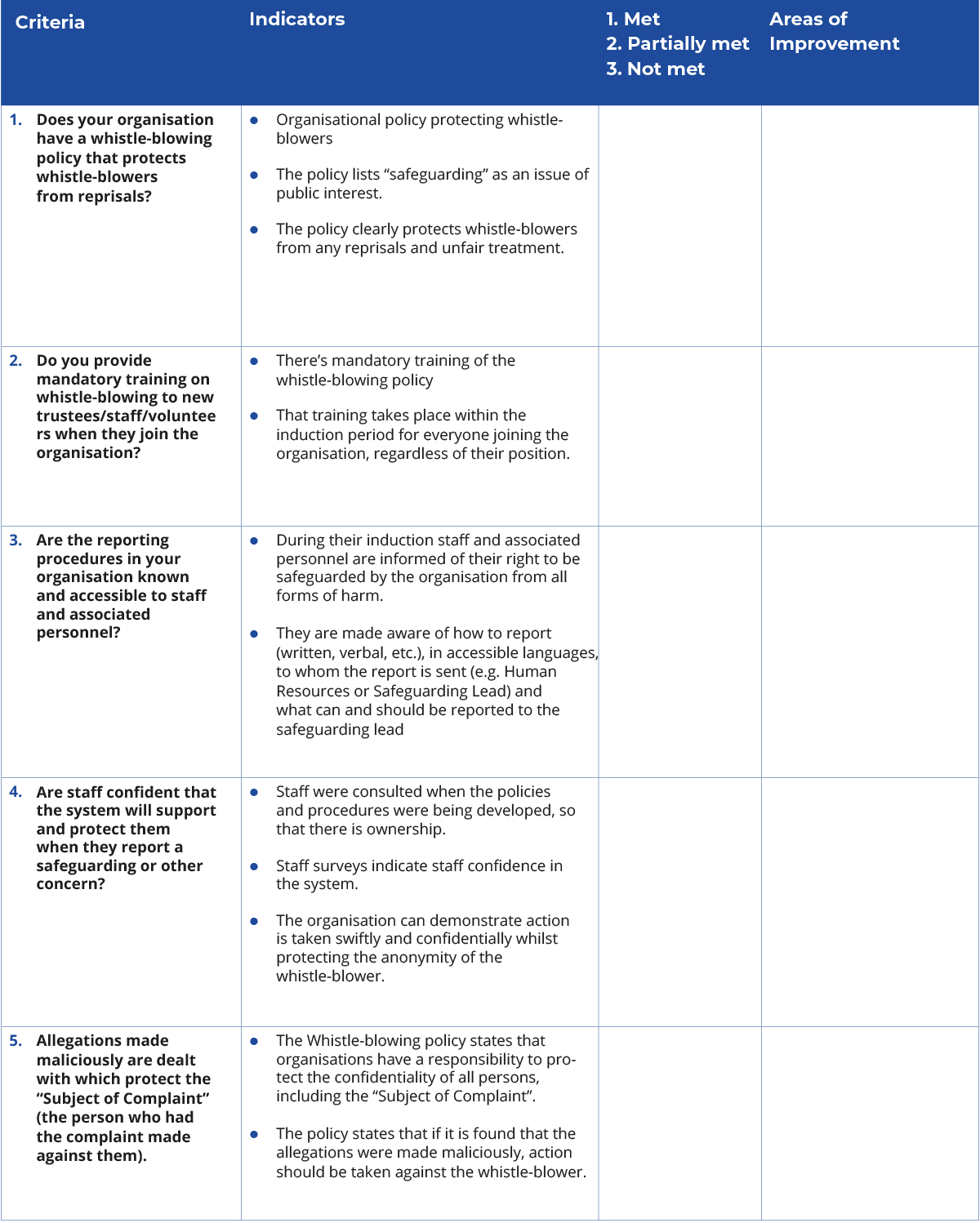Unit 5: Response
5.9 Supporting whistleblowers

© Andrii Yalanskyi / Shutterstock
You will remember from Unit 4 that some people are hesitant to come forward to report their concerns for various reasons. Often, they are afraid of a backlash by organisations.
Many of those who report may not be survivors or victims themselves but are known as ‘whistleblowers’, i.e., they are disclosing concerns that they believe are in the public interest and will affect others.
A whistleblower is a person, usually an employee, who exposes information or activity within a private, public, or government organisation that they believe to be illegal, illicit, unsafe, a waste, fraudulent or an abuse of taxpayer funds. Those who become whistleblowers can choose to bring information or allegations to surface either internally or externally.
It’s important therefore to understand the fears of those who do speak up and consider organisational responsibility to protect them.
|
Activity 5.9 Potential consequences of speaking out Read the following account of Bao who was a field worker with an NGO. The experiences he describes highlight the potential consequences of speaking out for individual workers. Bao: “I kept quiet for a time, but I didn’t like the way this member of staff was behaving with some of the children. So, in the end, I decided I had to speak up. When I did, it seemed like nobody believed me and everybody, including the management, made my life difficult. People stopped talking to me and I started getting threatening letters delivered to my home. I had to leave the organisation in the end and not much action has been taken about the concerns I raised anyway – they just moved that guy on quietly. I’m so disappointed in the organisation, which I thought was supposed to be helping vulnerable people and keeping them safe.” Reflect and respond to these questions in your learning journal:
|
Whistleblowers and safeguarding
![]()
Hasan has a question about whistleblowing. Watch the video above.
|
Activity 5.10 Checklist on whistleblower protection
Based on international donor standards, organisational safeguarding policies and procedures must contain protection for whistleblowers against any repercussions of speaking out. Study the example table below. Here is a downloadable version of this table. Column 1 – is a list of criteria for whistleblowing under donor compliance standards. Column 2 – are the indicators which satisfy the criterion. Column 3 – has been left blank for you to complete on behalf of your organisation.
Column 4 – for those columns which have been shaded orange or red, make a note of the various areas which can be improved in your organisation. Also think about what you will need to do to make these improvements a reality.
© (Adapted from FCDO’s Enhanced Due Diligence Standards. Reproduced under the terms of the OGL) |
![]()
Want to find out more?
If you are interested in reading more on whistleblowing, follow the links below:

